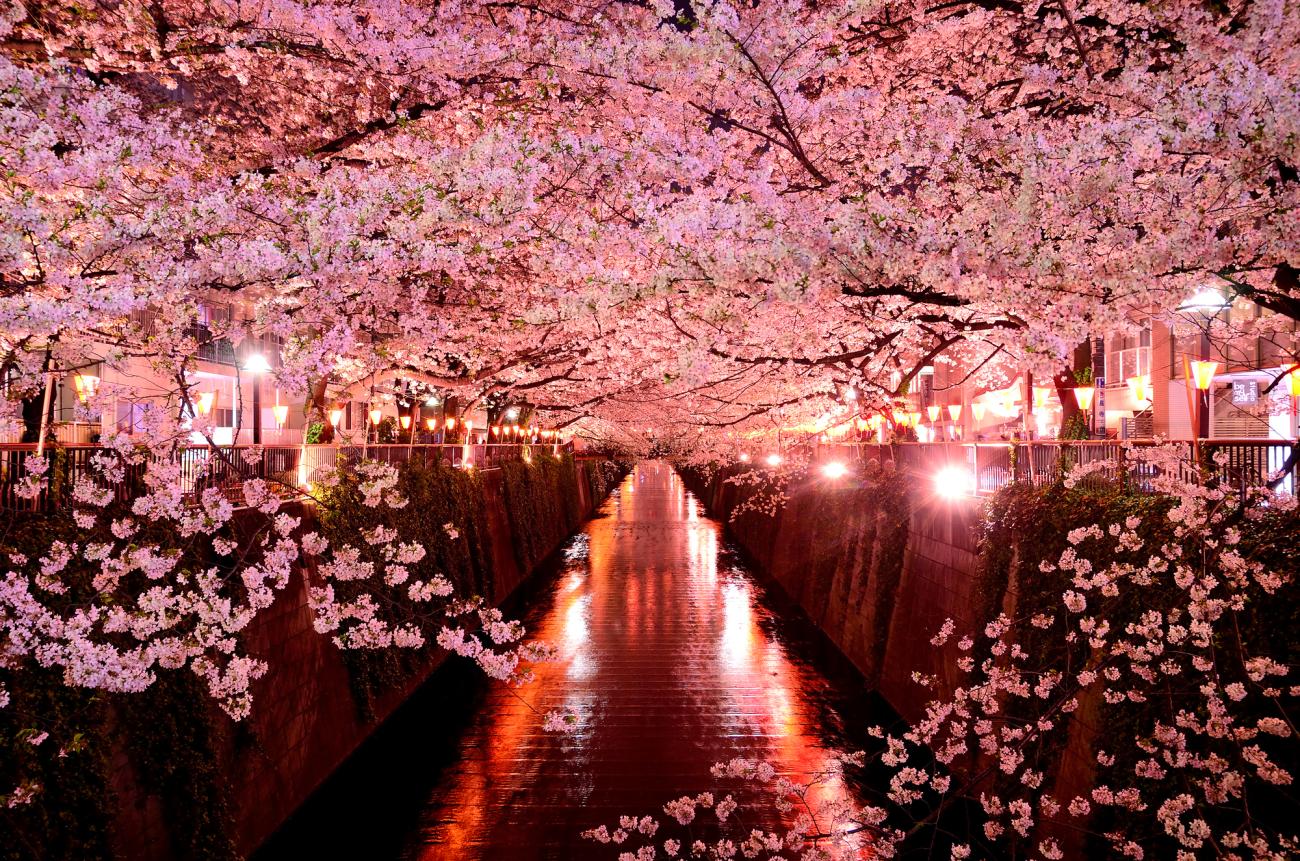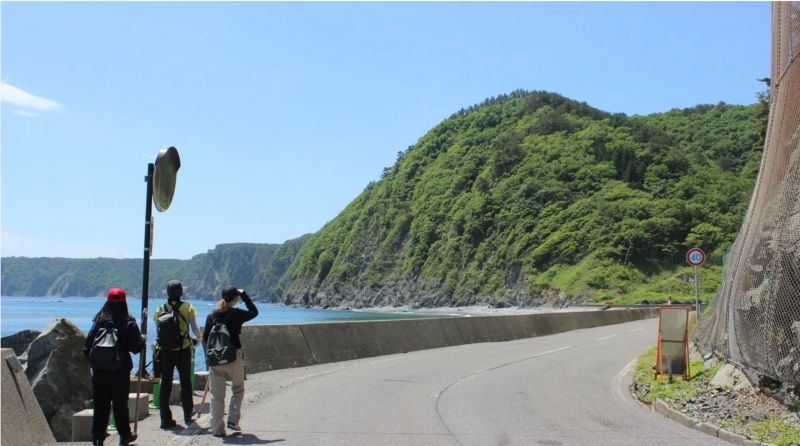The Kumano Kodo is the name of a hiking route made up of seven trails that snake through the Kii Mountain Range in Japan’s Wakayama prefecture.
The four main routes (Kohechi, Nakahechi, Iseji and Omine-Okugakemichi) all converge at the beautiful Kumano Hongu shrine – and each demand a multi-day traverse through the heart of the Kii Peninsula
The Route lies around 100 km south of Osaka, or a half a day’s train journey from central Kyoto.
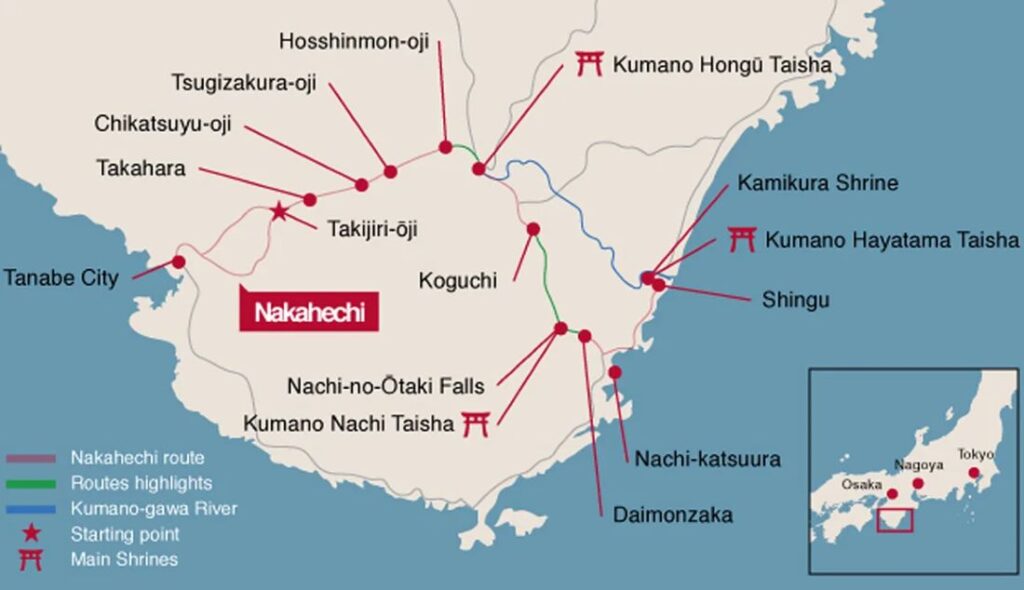
The Route is one of only two pilgrimages in the world registered as a UNESCO World Heritage Site. (Spain’s Way of St. James is the other.)
Though there is some stiff competition, Kumano Kodo just might be one of the world’s top nature hikes.
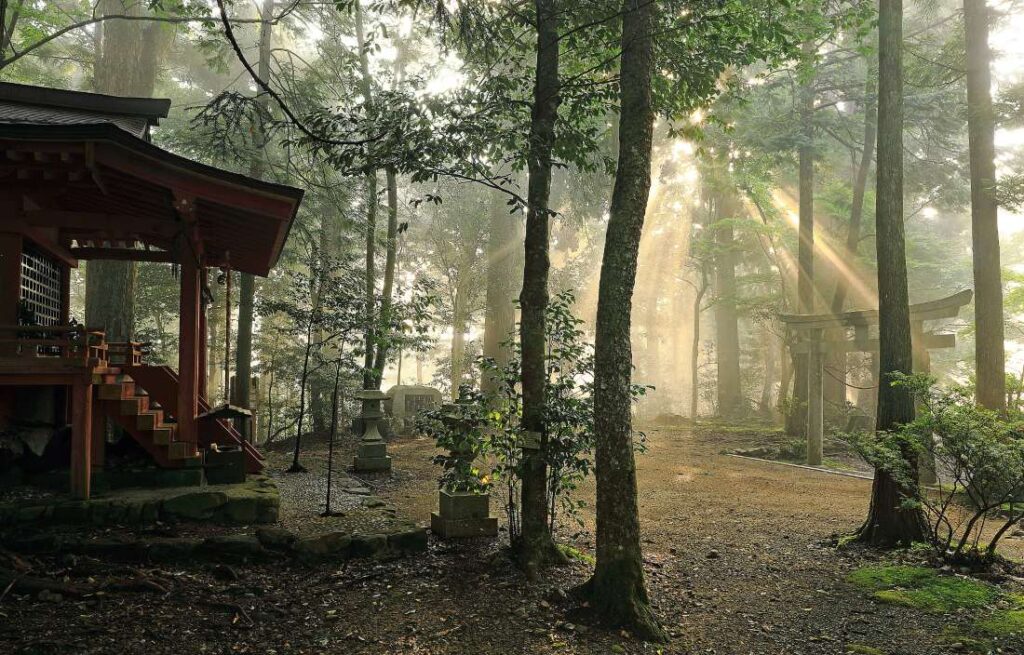
The Kumano Kodo is actually a network of several ancient pilgrimage routes that converge on Kumano Hongu Taisha Shrine, a powerful Shinto shrine in the mountainous heart of Wakayama Prefecture.
Hongu Taisha is the most important of three famous shrines known as the Kumano Sanzan.
The other two, Kumano Nachi Taisha and Kumano Hayatama Taisha, are both near the eastern coast of Wakayama and are connected to Hongu Taisha by well-traveled pilgrimage routes.
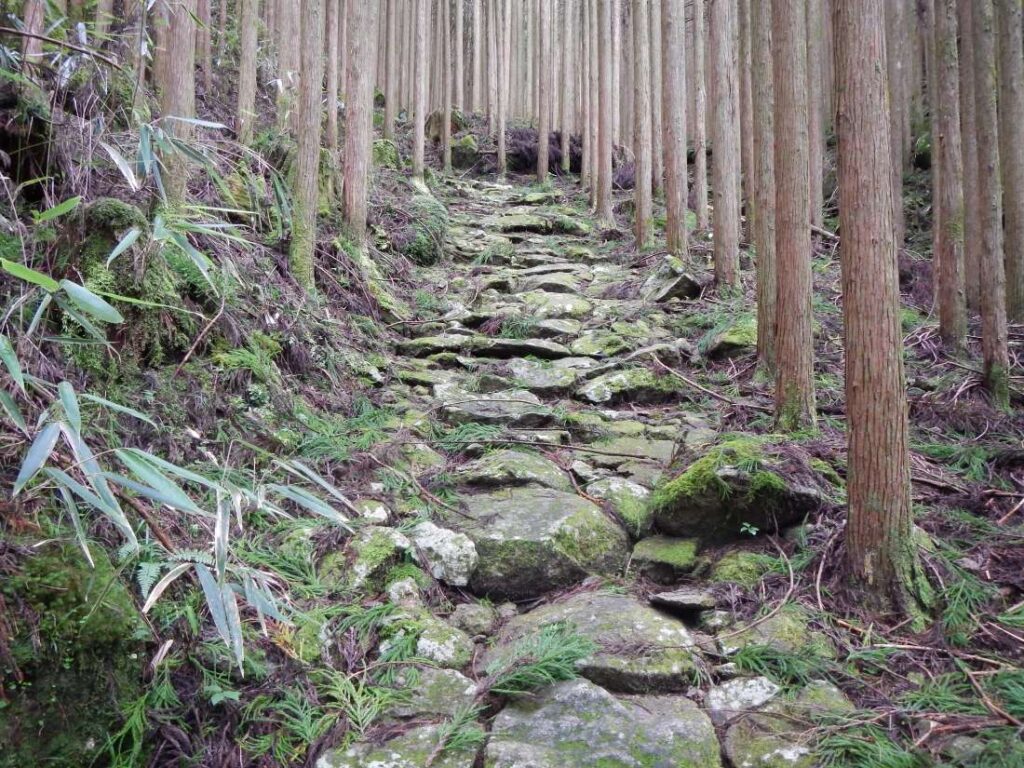
The length of the Kumano Kodo depends entirely on the specific route chosen, as it’s a network of interconnected trails, not a single path.
The most popular – and accessible route – the Nakahechi Route – is approximately 70-75 km long and can be completed in about 4-5 days, while other routes, such as the Iseji, can be significantly longe
The Nakahechi starts at Takijiri, a trailhead about 15km west of Tanabe, the city on the west coast of Wakayama that serves as the main entry point for the Kumano Kodo (it’s accessible by express trains from Kyoto and Osaka).
Travellers can use a Japan Rail Pass for these journeys). From Takijiri, it’s a three-day walk through the mountains to Hongu (home to Kumano Hongu Taisha).
This is the classic and most well-preserved route, connecting Tanabe to the three Grand Shrines. It’s possible to complete this trail in approximately 4 to 7 days, or even shorter if you use buses to skip sections.
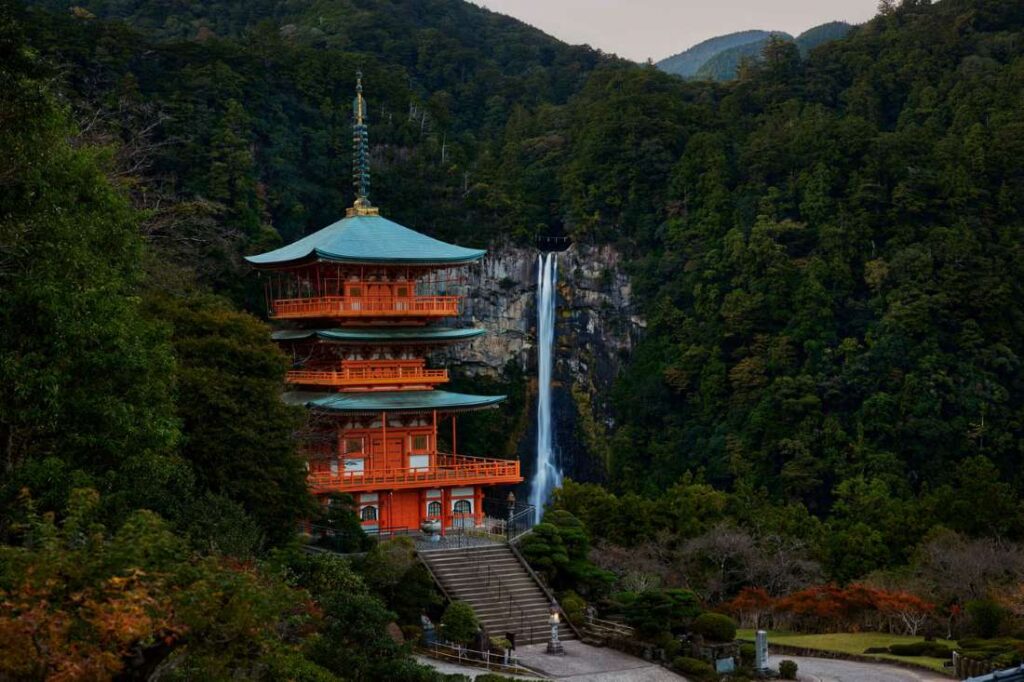
Kumano Kodo area has an excellent transportation network , allowing hikers to undertake off shorter walks by traveling to various points along the route by bus or train.

